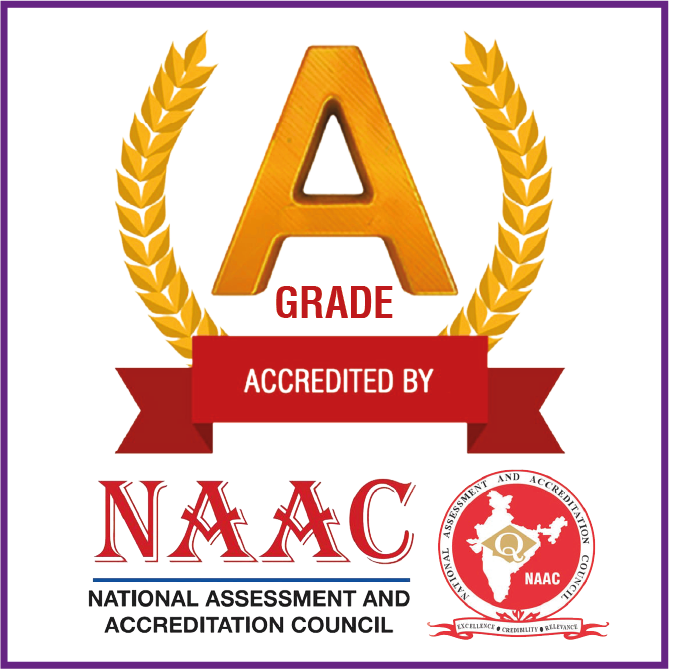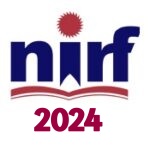Best Practices – I
- Title of the Practice
HRD Cell Programs for Holistic Development and Academic Excellence
- Objective of the Practice
- To develop the knowledge and skills of faculty and staff on teaching, research and administration.
- To motivate the faculty and to improve them through their career path.
- The Context
- The HRD (Human Resource Development) Cell and IQAC play a pivotal role in empowering faculty members by offering a comprehensive range of professional development programs. These programs are designed to address key areas that contribute to effective teaching, leadership, and personal well-being, which are essential in fostering a robust academic ecosystem in higher education institutions.
- Faculty members are encouraged to develop innovative approaches in curriculum delivery, assessment methods and pedagogy to meet diverse learning needs.
- Ensures high academic quality by aligning teaching practices with institutional goals and global benchmarks.
- Enhances leadership qualities such as decision-making, mentoring and critical thinking abilities to effectively tackle academic challenges.
- Equips faculty with effective stress management strategies to ensure mental well-being and productivity.
- Promotes teamwork among faculty, fostering a sense of community within the institution.
- Enables educators to develop captivating, applicable, and adaptable course materials designed to meet changing academic and industry requirements.
- The Practice
- The KIOT – HRD Cell in association with IQAC has developed a suite of programs aimed at providing educators with the tools for effective teaching, leadership, and personal well-being in higher education.
- These programs cover stress management, effective leadership, time management, problem-solving, public speaking, and presentation techniques. They also focus on educational frameworks like Outcome-Based Education and Effective Curriculum Design, fostering meaningful relationships and ensuring academic quality.
- The Teaching-Learning Process under the autonomous system ensures flexibility and rigorous standards, enabling faculty members to impart education with confidence and contribute to the growth of the institution.
- Evidence of Success
- The HoDs have been promoted to director positions, reflecting their growth and leadership development.
- Senior faculty members have enhanced their skills and have been promoted to Head of the Department roles.
- Faculty members effectively guide their mentees, fostering students who actively engage in various events and win prizes.
- Faculty retention serves as a significant indicator of the effectiveness of the HRD and IQAC programs, as it reflects the satisfaction and well-being of faculty members.
- Faculty members contribute significantly to the effective design of the curriculum, ensuring academic quality and relevance.
- Faculty contributions to research, publications, and institutional projects have increased significantly, aligning with the institution’s vision for excellence in higher education.
- Faculty members have exhibited greater confidence and effectiveness in delivering lectures, engaging students, and using modern pedagogical techniques.
- Problems Encountered and Resources Required
- Balancing professional development programs with regular academic responsibilities can be challenging for faculty, leading to limited participation.
- Senior faculty or external mentors are in need to guide participants in applying new methodologies.
Best Practices – I Supporting Document
Best Practices – II
- Title of the Practice
Green practices for Eco-Friendly and Sustainable Environment
- Objectives of the practice
The initiative promotes and implements practices within and around the campus environment that prioritize environmental sustainability, reduce ecological footprints, and create a healthier, greener space for students, staff, and visitors. The main objectives are:
- Safeguard the environment and lower carbon emissions through the use of renewable
energy sources.
- Reduce waste creation and ensure safe waste management.
- Preserve water resources and reuse them through recycling.
- Promote cleanliness and hygiene practices among all students and staff members on
campus.
- The Context
An eco-friendly campus aims to create a green environment that minimizes pollution and promotes healthy living for all. By planting trees, the campus helps reduce CO2 emissions and improves air quality. Encouraging the use of public transport and college buses also helps reduce pollution by decreasing the number of individual vehicles on the road. Furthermore, utilizing renewable energy sources such as solar power lowers the campus’s carbon footprint, while water recycling ensures efficient use of water and prevents wastage. To reinforce these efforts, the campus organizes awareness programs that encourage tree plantation and promote sustainable practices both in and around the campus.
- The Practice
- Water conservation facilities are implemented across the campus to harvest rainwater, and wastewater is treated through the sewage treatment plant, after which it is used for gardening.
- Safe disposal of waste is ensured through a waste management policy for handling different types of waste like solid, liquid, and e-waste.
- Separate dustbins are provided to collect degradable and non-degradable waste.
- Incinerators are installed to safely dispose the used sanitary pads.
- Energy-efficient equipment such as LED bulbs and solar panel are used to cut down electricity consumption.
- Vehicle usage inside the campus is controlled to reduce carbon footprints.
- Hygiene across the college campus, including canteens and hostel kitchens, is ensured through regular cleaning by a dedicated team.
- Energy and environmental audits are conducted to identify and fix issues, ensuring a sustainable campus environment.
- Awareness programs on environmental issues are conducted periodically by NSS students.
- Evidence of Success
- The Green, Energy, and Environmental audit reports highlight the effectiveness of the campus’s green practices.
- Around 950 students are involved in the plantation drive for a green and healthy environment – One Student One Tree.
- NSS students actively participate in planting tree saplings on the college campus as well as in nearby schools.
- Power consumption is reduced by using LED lights and a solar power plant.
- An MoU is signed with vendors for the disposal of e-waste.
- Paperless communication takes place through the college website, WhatsApp, E-mail, and Coxco Software.
- Problems Encountered and resources required
- The initial cost for eco-friendly products and technologies is high.
- Organizing field visits is challenging due to logistical constraints.
- Sustaining the continuous involvement of students and staff is a major challenge.
Best Practices – II Supporting Document







